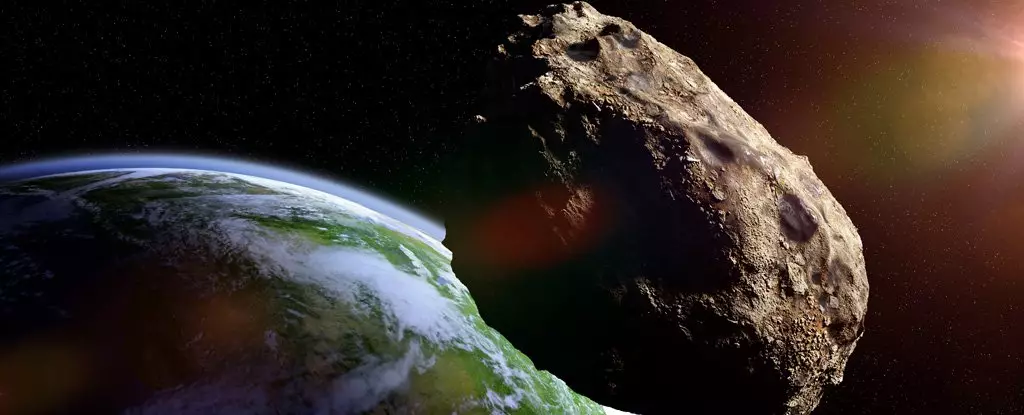As humanity stands on the precipice of a new era in space awareness and planetary defense, the astronomical community is focused on an asteroid named 2024 YR4. Spotted by a telescope in Chile on December 27, 2024, this celestial body has become a subject of intense scrutiny due to a noted probability—1 in 83—that it could strike Earth within the next eight years. Flagged by the International Asteroid Warning Network (IAWN), the potential impact is anticipated on December 22, 2032, raising alarms among scientists and policymakers alike.
Understanding the Risks of Asteroid 2024 YR4
Asteroids, especially those classified as potentially hazardous, have garnered increasing attention in recent years, as advancements in detection technologies have improved early warnings. The size of 2024 YR4, estimated to range from 40 to 100 meters in diameter, is noteworthy because it holds the potential to cause localized devastation upon impact. While the ensuing chaos might not reach global proportions, the resultant damage could extend to a radius of approximately 50 kilometers from the point of collision.
In context, the risk factors associated with 2024 YR4 prompt international agencies—including NASA’s Center for Near-Earth Object Studies and the European Space Agency—to mobilize quickly. As astronomer Colin Snodgrass notes, the immediate response requires heightened observational activities, primarily utilizing advanced telescopes for further investigation. This phase is crucial to ascertain the asteroid’s trajectory and physical characteristics more accurately, which will ultimately influence potential mitigation strategies.
Evaluated on the Torino Scale—a classification system designed to assess the impact hazard of near-Earth objects—2024 YR4 currently sits at a level three. This designation indicates a moderate risk that necessitates monitoring, though it reflects a likelihood for reassignment to zero as forthcoming observations clarify its path. Only one asteroid in history, 99942 Apophis, has surpassed this rating, but protocols established during its earlier threat profile ultimately proved unnecessary.
The trajectory of asteroids like 2024 YR4 tends to demonstrate an inherent instability in their early sighting days. The wide ‘risk corridor’ allows for a brief spike in perceived threat before detailed tracking reduces uncertainty over time. This phenomenon underscores a key characteristic of asteroid behavior: as observations accumulate and predictions become more refined, many initially alarming trajectories end up revealing a safe passage away from Earth.
Despite the present lack of clarity surrounding 2024 YR4’s path, collaboration among various international agencies remains pivotal. The IAWN coordinates efforts to ensure that emerging data shapes an effective planetary defense strategy. It emphasizes the necessity of global cooperation in addressing potential threats from space. If monitored indicators suggest that the risk remains significant, the discussions are likely to culminate in recommendations to the United Nations, potentially advocating for operational measures to divert or neutralize the asteroid before any possible impact.
Technological advancements, particularly demonstrated during NASA’s Double Asteroid Redirection Test (DART) mission, offer hopeful avenues for deflection strategies. The capability to redirect or even destroy an incoming asteroid is increasingly becoming a feasible option for governments worldwide. Established frameworks within the Space Mission Planning Advisory Group further facilitate dialogues surrounding risk management and appropriate responses, ensuring that the science behind these operations remains robust and adaptable.
The Future of Planetary Defense
The emergence of Asteroid 2024 YR4 serves as both a warning and an opportunity to enhance planetary defense mechanisms. With global interest in space exploration on the rise, such incidents often catalyze a pioneering spirit for advanced observation technologies and more extensive international collaboration. As scientific communities and governments grapple with this potential threat, the lessons learned will undoubtedly chart a course for future planetary defense initiatives.
The continued monitoring of 2024 YR4, coupled with international readiness to act, encapsulates the essence of humanity’s journey toward a more vigilant and proactive approach to celestial threats. While initial assessments regarding asteroid risk can be alarming, the development of response frameworks and technological advancements positions us to address the unknowns of the universe with resourcefulness and cooperation. Whether 2024 YR4 proves to be a harbinger of danger or a learning experience in planetary defense, its impact on humanity’s understanding of space will be significant.


Leave a Reply